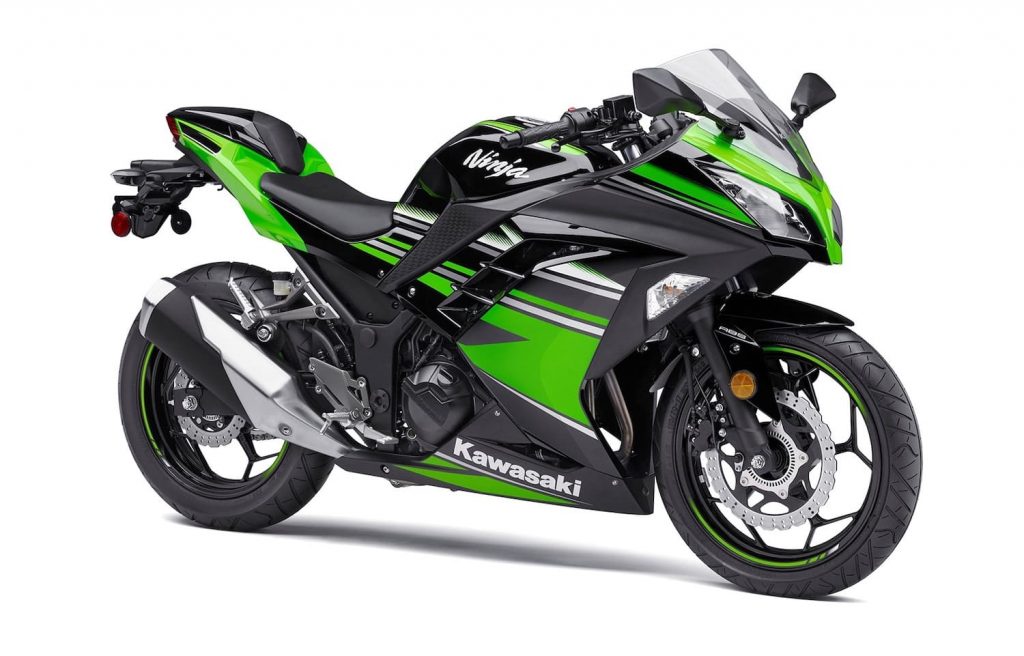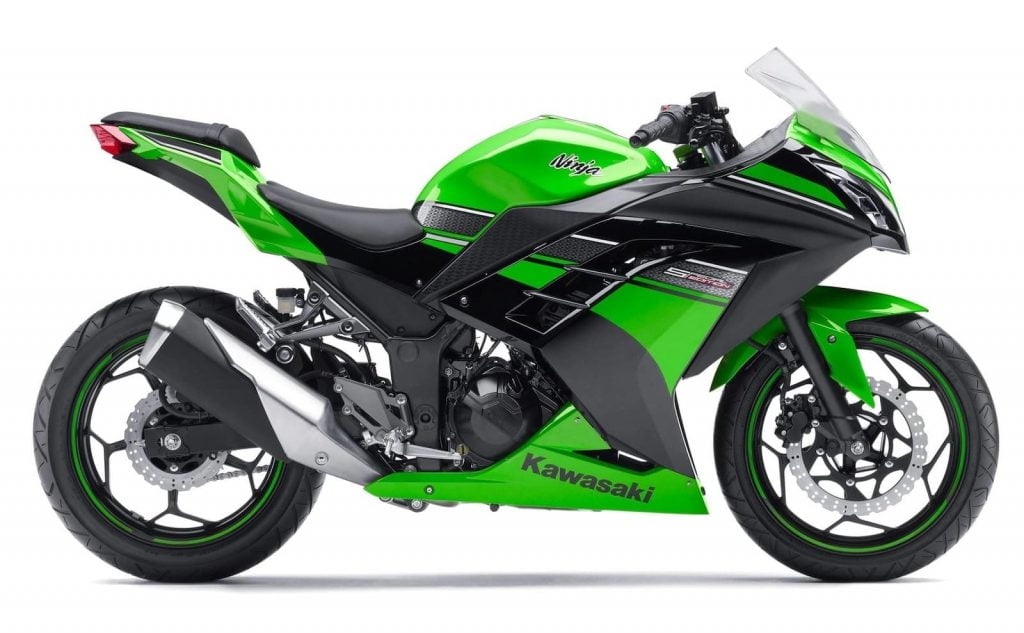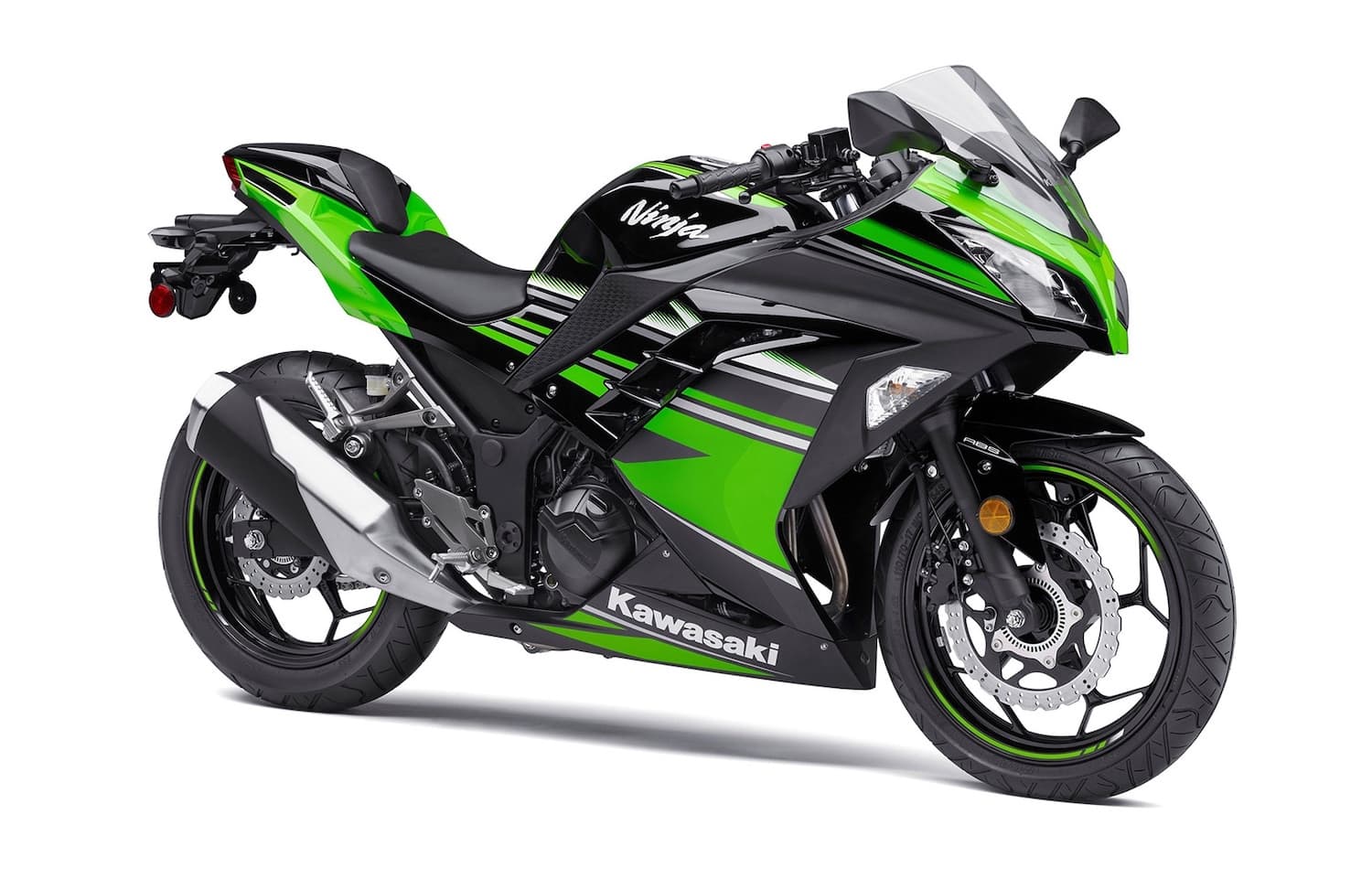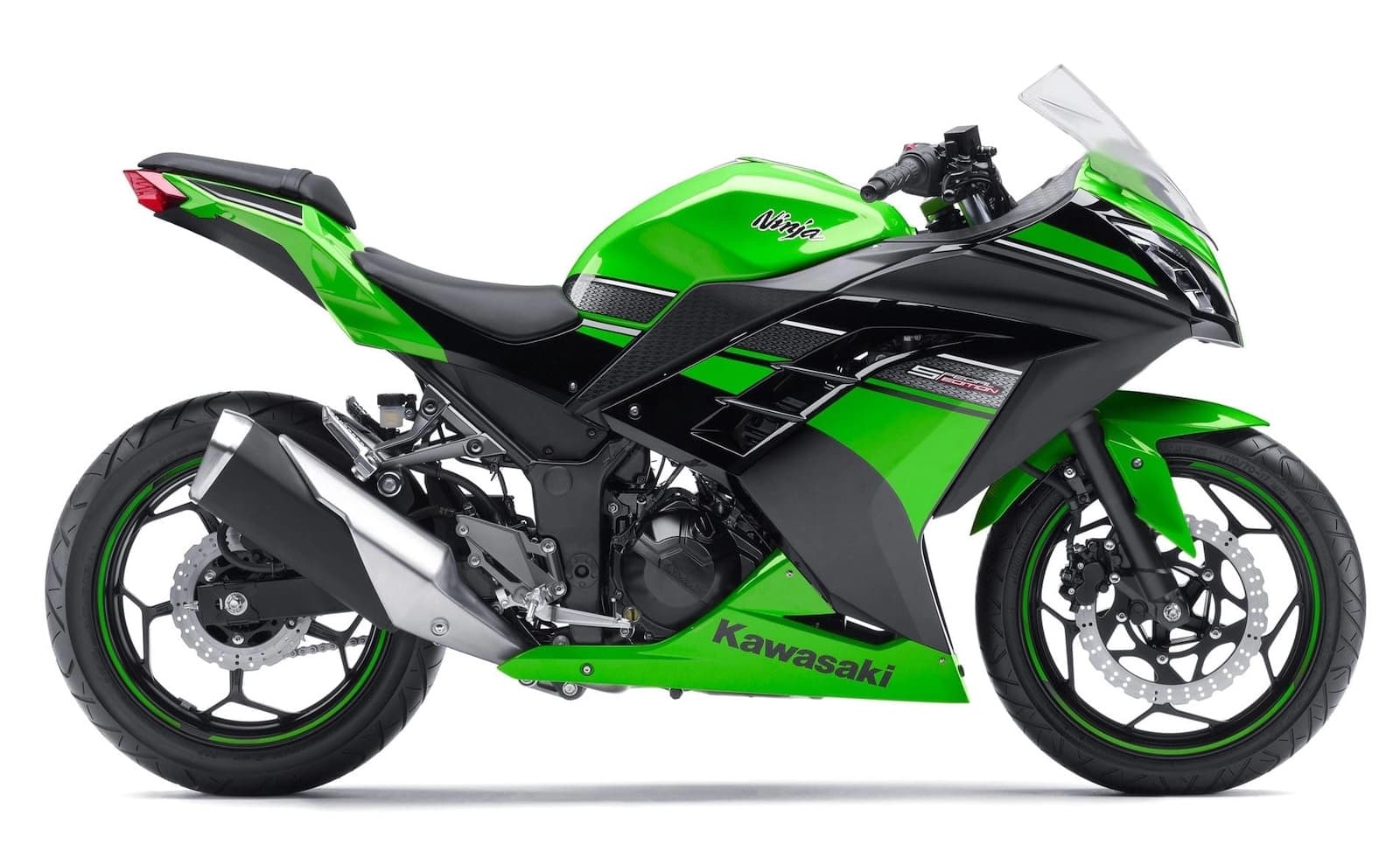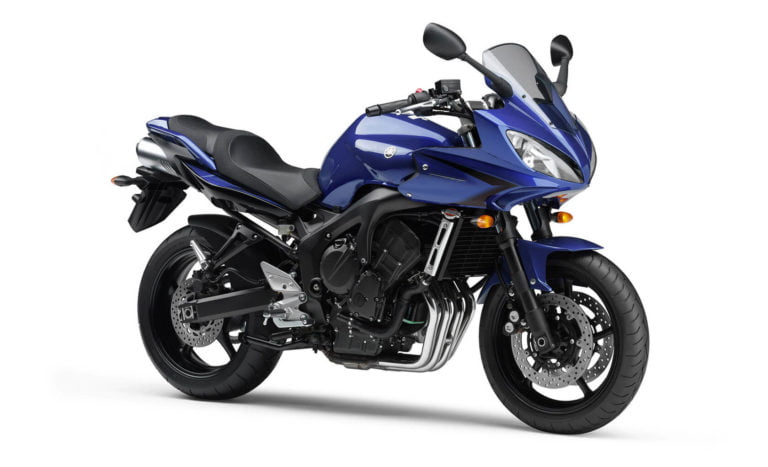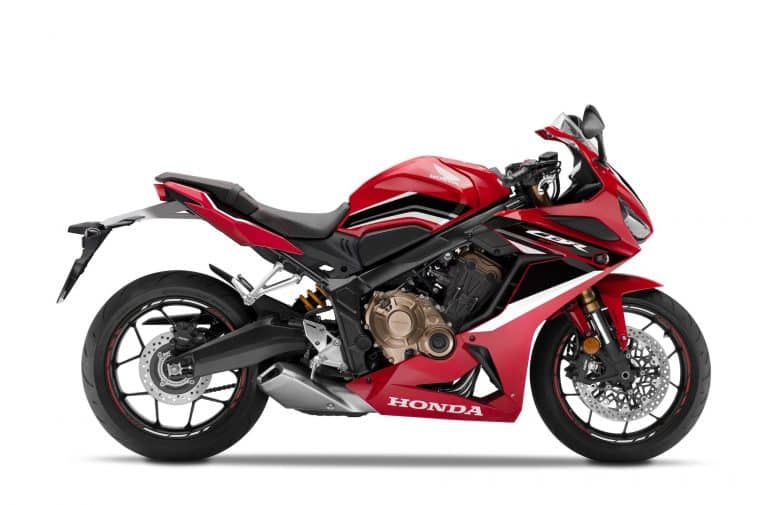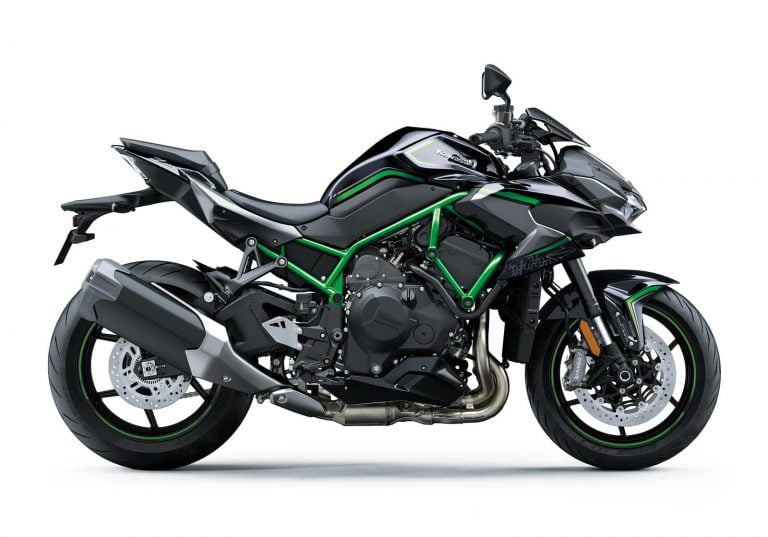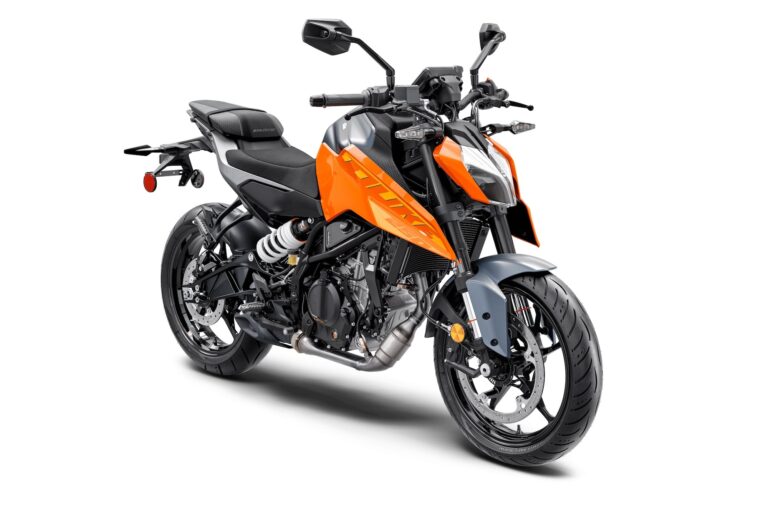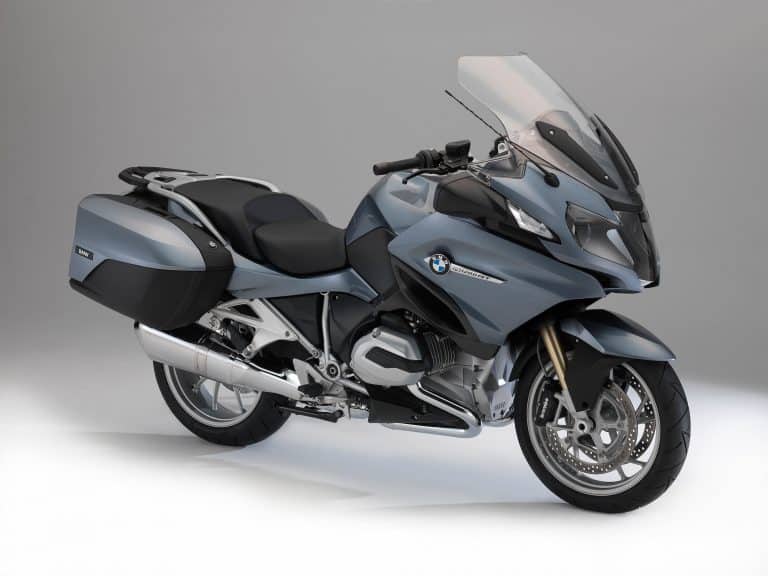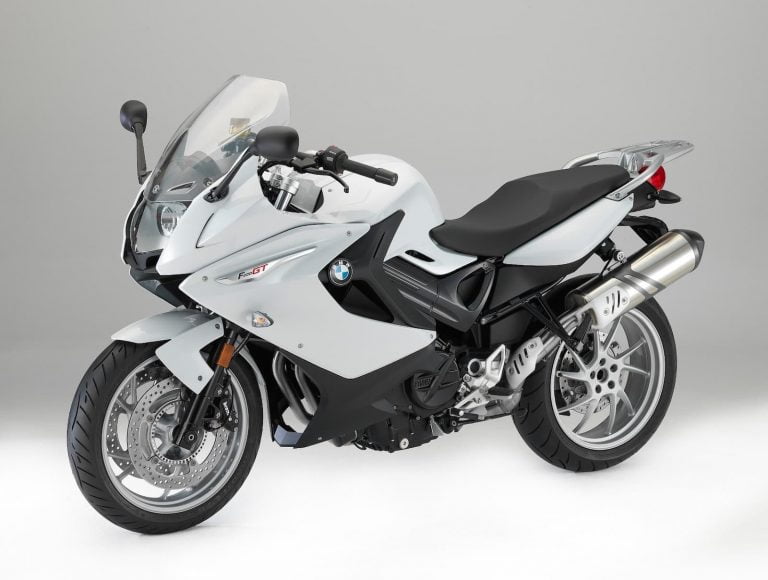Kawasaki Ninja 300 (2013-2017) Maintenance Schedule and Service Intervals
This is the maintenance schedule with associated service intervals for the Kawasaki Ninja 300, sold between 2013 and 2017, replacing (finally) the long-standing Ninja 250. The Ninja 300 is also known as the EX300.
The Kawasaki Ninja 300 is a sport motorcycle with a pretty upright posture. It might seem like a small upgrade to the 250, but the 300 is capable of power wheelies if you try! In many jurisdictions, learner bikes rules changed so that beginner riders could have bikes larger than 250cc as long as they weren’t too powerful, so the Ninja 300 became a popular choice world-wide.
This maintenance schedule is similar/essentially identical for the Z300. It’s also the same for the ABS versions.
The Kawasaki Ninja 300 was retired when it was replaced with the Kawasaki Ninja 400, which is both more powerful and lighter.
Originally published Jan 20, 2021, but significantly revised since.
This site has links for things like oil and spark plugs from which we earn a commission (which unfortunately nobody can save, not even us). If you appreciate this work, then please use those links. Thanks!
Kawasaki Ninja 300 Service Intervals
Maintaining the Ninja 300 isn’t too difficult. The main services are every 7600 miles / 12000 km, at which point you change the oil and spark plugs, inspect the air filter, and also do a valve service.
Yes, the valve services are quite frequent, but there are only two pistons, in one cylinder block, and the engine is mostly exposed so you don’t have to remove too much to get to it.
The Ninja 300’s engine is liquid-cooled, so make sure you keep the coolant fresh, replacing it every 2 years. You can do this at the same time as replacing the brake fluid.
Finally, the Kawasaki Ninja 300 has a chain final drive, so regularly check the wear and the tension, adjusting as necessary.
What you need to service the Kawasaki Ninja 300
| Part | Kawasaki 300 series spec |
|---|---|
| Oil | You need 2.2L (2.3 US qt) of SAE 10W-40 engine oil (manual says mineral, semi-synthetic, and full synthetic are all OK). Motul 5100 10W-40 is a popular choice.. Don’t over-torque the drain bolt (spec is 30 Nm/22 lb-ft per the manual) — use a torque wrench if you don’t have experience with how much torque is enough. |
| Oil filter | Oil filter is part 16097-0008, or you can use Hiflofiltro HF303RC. Torque for oil filter is 17.5 Nm (12.9 ft-lb) (use a torque wrench, and it’s easier on the K&N one) |
| Chain lubricant | The chain needs to be lubricated every 600 km/400 miles (or more, if it gets wet/dirty). Motul chain paste is cheap and well-loved. |
| Cable lubricant | Remember to lubricate your clutch cable (and brake cables if you have them) with a cable lubricant. Protect All Cable Life is a good general-purpose lubricant. |
| Brake fluid | Spec is to use DOT 4 brake fluid. |
| Coolant | Use 1.5L (about 1.6 US qt) of ethylene glycol pre-mix coolant with a 50% mixture. |
| Front brake pads | Genuine part number for front brake pads is 43082-0081 for Ninja 300/400. Get double-sintered EBC brake pads for better bite and wear — code FA197HH. |
| Rear brake pads | Genuine part number for rear brake pads is 43082-0128 (or same as front… same pads!). Get double-sintered EBC brake pads for better bite and wear — code FA197HH. |
| Spark plugs | NGK CR8E, with a spark plug gap of 0.7-0.8mm (use a spark plug gapping tool), torqued to 13 Nm or 9 ft-lb (use a torque wrench) |
| Air filter | Genuine part number is 11013-0020. You can also use the K&N equivalent KA-2508. |
| Grease | Use a lithium soap-based grease for all the important greasing points. |
Maintenance Schedule for Kawasaki Ninja 300
Below is the maintenance schedule for the Kawasaki Ninja 300.
Generally speaking, the Ninja 300 has maintenance intervals of 7600 miles or 12000 km at which point the oil and filter should be changed and most things inspected, including the valve clearance.
Notes:
- Observe the earlier of time or distance-based maintenance intervals.
- The break-in service is omitted as these are no longer sold new.
- Keep following the maintenance schedule in the pattern shown.
Notes on letters used:
- I = Inspect
- R = Replace
- L = Lubricate
| mi x 1000 | 3.8 | 7.6 | 11.4 | 15.2 | |
|---|---|---|---|---|---|
| km x 1000 | 6 | 12 | 18 | 24 | Every |
| Engine oil and oil filter (Motul 5100 10W-40, HF303RC) | R | R | Year: R | ||
| Air cleaner element (KA-2508) | I | I | 2 years: R | ||
| Coolant, water hoses, and O-rings (Zerex G05) | 3 years OR 22500 mi / 36000 km: R | ||||
| Spark plugs (NGK CR8E) | R | R | |||
| Valve clearances | I | I | |||
| Idle speed (1250 – 1350 rpm) | I | I | |||
| Throttle control system (play, smooth return, no drag) | I | I | Year: I | ||
| Engine vacuum synchronization | I | I | |||
| Fuel system | I | I | Year: I | ||
| Fuel hoses | 5 years: R | ||||
| Evaporative emission control system (if fitted) | I | I | I | I | |
| Coolant level | I | I | |||
| Cooling system | I | I | Year: I | ||
| Air suction system | I | I | |||
| Clutch operation (play, engagement, disengagement) | I | I | |||
| Tire air pressure | I | I | Year: I | ||
| Wheels and tires | I | I | Year: I | ||
| Wheel bearing damage | I | I | Year: I | ||
| Drive chain wear | I | I | Check more often if putting strain on chain | ||
| Drive chain guide wear | I | I | |||
| Brake system | I | I | I | I | Year: I |
| Brake fluid level | I | I | I | I | 6 months: I |
| Brake fluid (front and rear) (Castrol DOT 4) | R | 2 years: R | |||
| Brake hoses | 4 years: $ | ||||
| Rubber parts of brake master cylinder and caliper | 4 years OR 30000 mi / 48000 km: R | ||||
| Brake pad wear | I | I | I | I | More often if riding aggressively |
| Brake light switch operation | I | I | I | I | |
| Suspension system | I | I | |||
| Lubrication of rear suspension | L | ||||
| Steering play | I | I | |||
| Steering stem bearings | I | I | |||
| Chassis parts | L | L | |||
| Condition of bolts, nuts, and fasteners | I | I |
Maintaining Your Chain on the Kawasaki Ninja 300
It’s important to maintain your chain on the Ninja 300, as on any chain-driven motorcycle. Use a good-quality chain lubricant like Motul chain paste, or a Motul chain care kit which comes with a couple of handy tools to maintain the chain.
Kawasaki recommends you follow the following chain maintenance schedule:
| Chain maintenance item | Every |
|---|---|
| Check drive chain lubrication condition, lubricating if necessary (Motul chain paste) | 400 mi / 600 km |
| Check drive chain slack, adjusting if necessary Chain slack: 20-30mm, measured at center of chain | 600 mi / 1000 km |
Notes:
- Do these items (checking/adjusting slack, and checking/applying lubrication) more often if you ride your Ninja 300 in dusty or rainy conditions.
- Always lubricate the chain after washing the motorcycle.
Tyre size and tire pressure for the Kawasaki Ninja 300
The Kawasaki Ninja 300 has the following tires and tire sizes standard.
| Wheel | Tyre (Tire) size | Tyre (Tire) pressure (cold) |
|---|---|---|
| Front | 110/70-17 M/C 54S | 200 kPa / 2 bar / 28 psi |
| Rear | 140/70-17 M/C 66S | 225 kPa / 2.25 bar / 32 psi |
About the Kawasaki Ninja 300
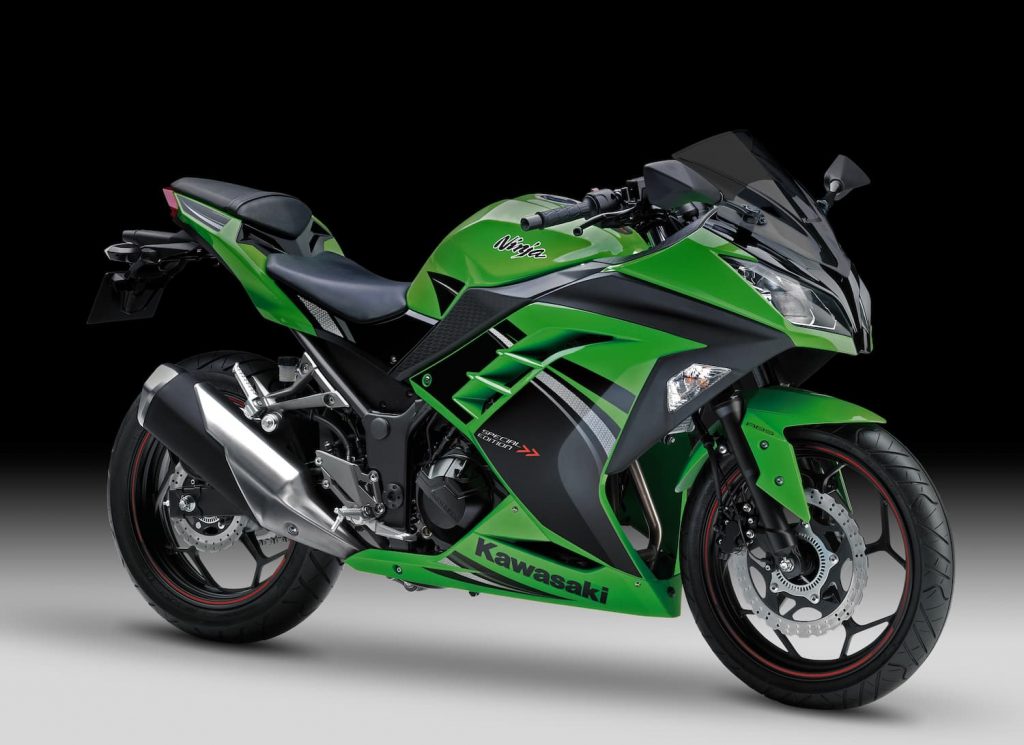
The Kawasaki Ninja 300 replaced the Ninja 250 from 2013 in many markets, but it’s still made in many markets around the world (e.g., India).
It follows the same general design pattern as the Ninja 250 before it: a lightweight, economical, agile, simple sport motorcycle with a comfortable riding position.
The Ninja 300 is lightweight and agile with a 296cc parallel twin that delivers 29 kW (39 hp) at 11000 rpm. So it still needs to sing to get to its full power — but adequate torque also comes on low, making it a sporty bike at commuting speeds.
In its day, the Ninja 300 was the pick of the litter among the other lightweight sport bikes, both for everyday commuting and as a base for track work. But the Yamaha R3 overshadowed it; Kawasaki’s response was the lighter AND faster Kawasaki Ninja 400.
But the Ninja 300 is still no slouch. Its parallel twin engine is lively and fun, responsive easy to rev, with lots of torque across the powerband.
The suspension is non-adjustable and quite basic, with a 37mm conventional fork up front and a non-adjustable shock at the rear. They’re among the first items most people upgrade if considering the 300 for a track bike.
Brakes are also simple but adequate, with a 290 mm disc at the front and 220 mm disc at the rear, with two piston calipers on each. ABS is a frequently chosen option and was the only option available in many markets.
These days, the Kawasaki Ninja 400 is the pick for many newer bike buyers, making the Ninja 300 quite attractive on the used market for something to thrash on track days on tighter circuits.
Reference — Manual for the Kawasaki Ninja 300
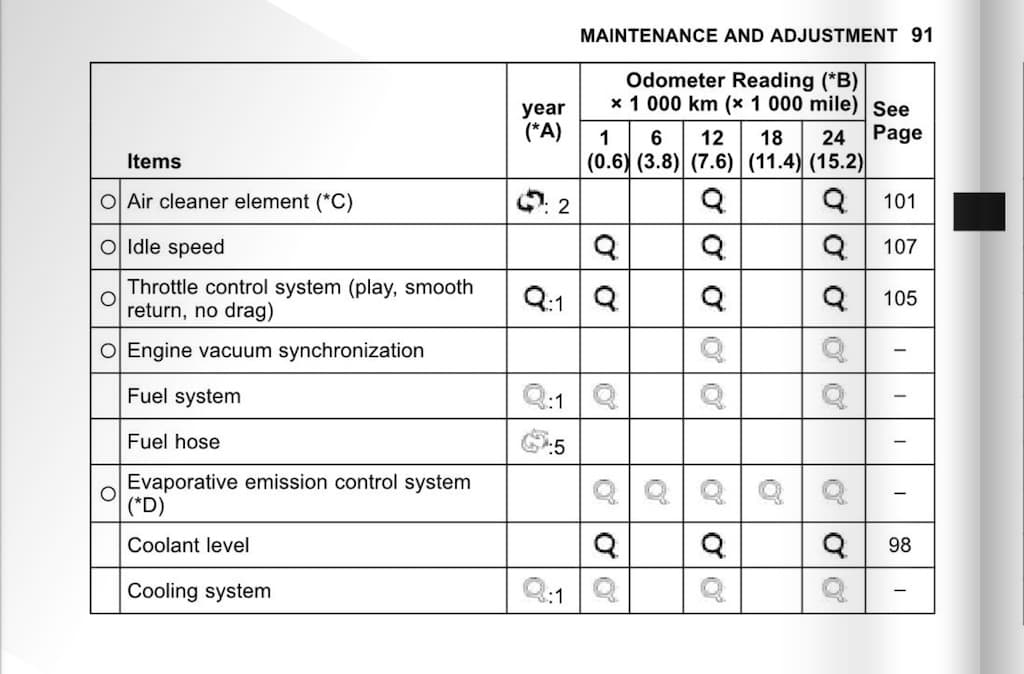
The above maintenance schedule comes directly from the user’s manual for the Kawasaki Ninja 300. Kawasaki owner’s manuals are available here.
